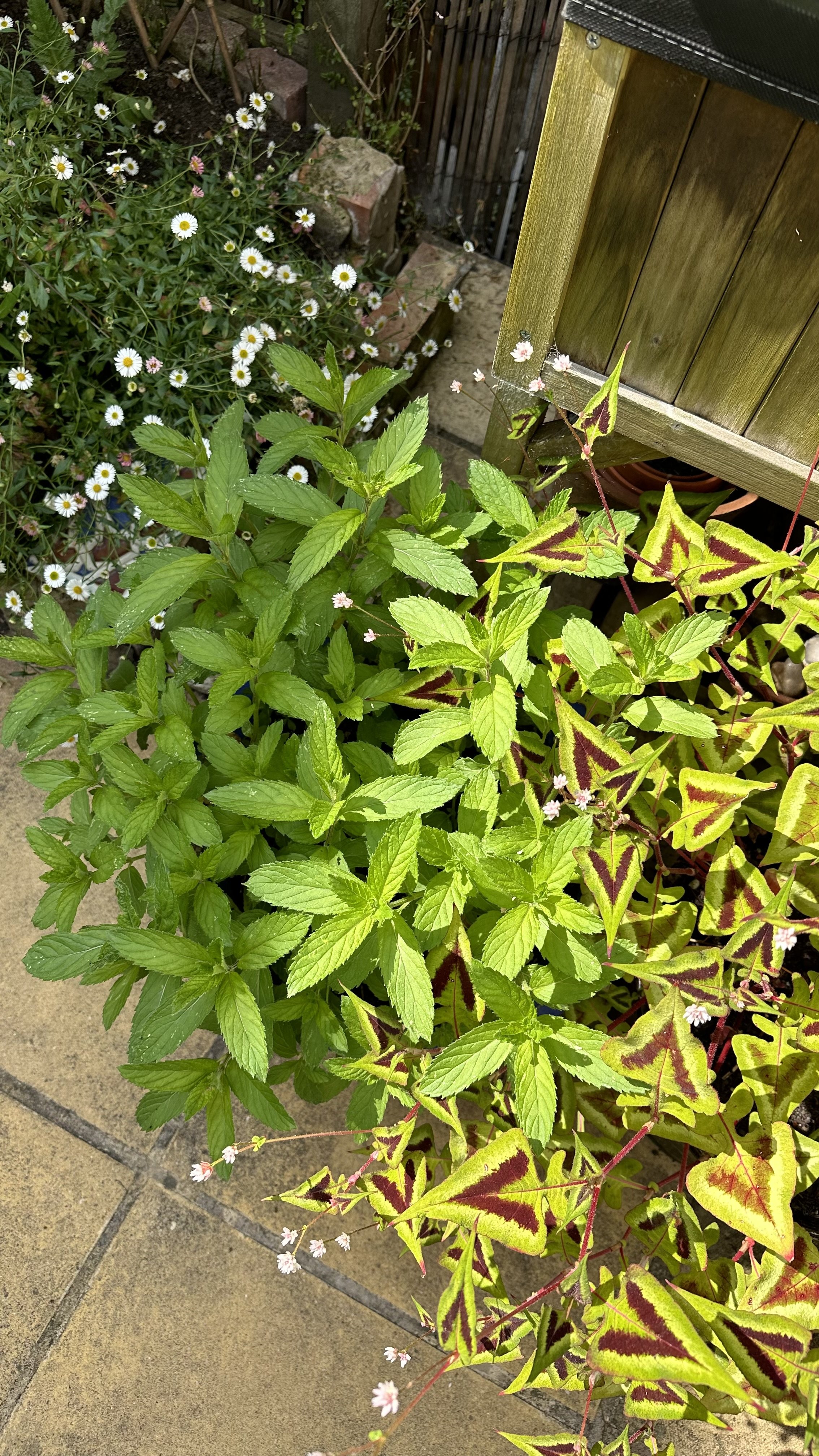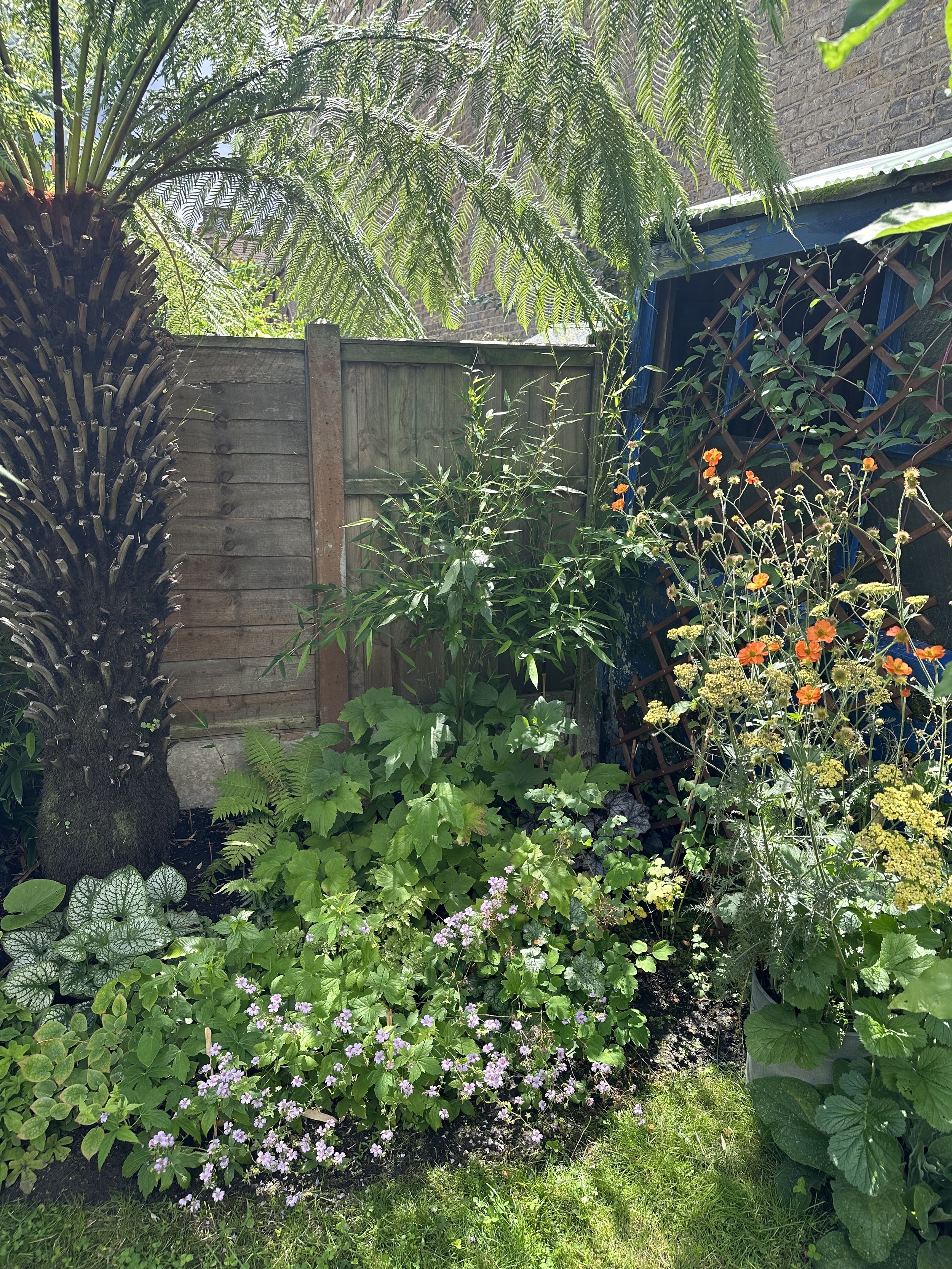How Much Sun Does a Garden Need?
This website is reader-supported - thank you! This post may contain affiliate links. As an Amazon Associate, I earn from qualifying purchases at no extra cost to you.
Figuring out how much sunlight your garden needs can feel like a guessing game, but it doesn’t have to be.
Over the years, I’ve learned that sunlight is one of the biggest factors in keeping plants happy and productive.
Whether you’re growing vegetables, fruits, or edible flowers, knowing the right balance of sun exposure can make all the difference.
Let me walk you through what’s worked for me—and my garden!
My sunniest spot in the garden.
Understanding Sunlight: The Basics
When it comes to sunlight, not all plants—or gardens—have the same needs.
It’s kind of like people and coffee: some of us need a lot to thrive, while others are just fine with a smaller dose.
The amount of sunlight your garden gets sets the stage for what you can grow successfully.
Here’s a quick breakdown of the main sunlight categories:
Full Sun:
Think of this as the prime spot for sunbathers—plants here soak up at least 6 to 8 hours of direct sunlight every day.
If you’re dreaming of a vegetable garden brimming with tomatoes, peppers, or squash, full sun is what you need.
These plants thrive in the spotlight and love the heat.
Partial Sun/Partial Shade:
These terms can get a little confusing, but here’s how I think about it: partial sun means your plants get about 4 to 6 hours of direct sunlight, usually in the morning or early afternoon.
Partial shade, on the other hand, means they’re lounging in dappled light for most of the day or catching less than 6 hours of sun total.
This is a sweet spot for plants that like it a little cooler, like lettuce or root vegetables.
Full Shade:
These areas get less than 4 hours of sunlight a day, and most of that light is indirect.
It’s not ideal for veggies, but some plants, like hostas or ferns, are perfectly happy in these darker corners.
The trick is knowing your garden’s “sun map.”
Spend a day observing your space—yes, this means you might be standing outside with a coffee and a notebook, watching the sun move.
Note which areas are sunny and for how long.
It’s a bit of work upfront, but trust me, it’ll save you a lot of headaches (and sad plants) later.
Check out my guides:
My container garden in mid-afternoon sun.
How Much Sun Does a Vegetable Garden Need?
If you’re planning a vegetable garden, the amount of sun it gets is one of the biggest factors in how well your crops will grow.
Most veggies love the sun—like, really love it.
But not every vegetable is the same, and some are more forgiving if your garden has a little less light.
Here’s the scoop:
Full Sun Vegetables:
These are the sun worshippers—plants like tomatoes, cucumbers, zucchini, peppers, and squash.
They need at least 6 to 8 hours of direct sunlight each day to thrive.
If you can give them more, even better.
These plants soak up the sun to fuel their growth and produce all those delicious veggies we love.
Shade-Tolerant Vegetables:
Okay, so “tolerant” is the key word here.
No veggie thrives in full shade, but leafy greens like spinach, kale, and Swiss chard can handle partial shade, especially during the hotter months.
In fact, they might even prefer it—it keeps them from wilting under the summer sun.
If you’re like me, you might discover that one side of the yard is a total sun magnet, while another corner is a little more chill.
Use that information to plan where each type of veggie will go.
One thing I’ve learned the hard way: don’t try to force a sun-loving plant to survive in a shady spot—it’s a losing battle.
Instead, match your veggies to the conditions you’ve got.
And if you’re short on sunlight but still dreaming of those full-sun crops, don’t panic.
There are always tricks, like using reflective surfaces or pruning nearby trees to let more light in.
At the end of the day, happy plants = a happy gardener.
Give your veggies the sun they need, and they’ll reward you.
For more ideas, check out my guides:
How to Maximize Sunlight in Your Garden
Sometimes your garden doesn’t get as much sunlight as you’d like.
Maybe there’s a big tree casting shade, or you’re dealing with a yard that only gets partial sun for most of the day.
Don’t worry—I’ve been there, and there are plenty of creative ways to make the most of the light you do have.
Here’s what’s worked for me:
Trim Back Trees and Bushes:
Overgrown trees or bushes (or in my case, bamboo) can hog all the sunlight, leaving your garden in the shadows.
A little strategic pruning can work wonders.
I’m not saying you need to chop down your favorite tree, but thinning out some branches can open up the space for light to filter through.
It’s a simple fix that can make a big difference.
Use Reflective Surfaces:
This is a great trick!
You can use mirrors, light-colored walls, or even aluminum foil to bounce sunlight into shaded areas.
Plant Strategically:
Taller plants can create shade for shorter ones, so think about where you place them.
I like to plant sun-loving veggies like tomatoes or corn in the sunniest spots and save the shadier areas for greens like lettuce or herbs.
It’s all about using the space you have wisely.
Raised Beds and Containers:
If you’re stuck with a mostly shady garden, consider growing some of your crops in raised beds or containers.
The beauty of containers is that you can move them to sunnier spots as the light shifts throughout the day or season.
I’ve done this with basil and peppers, and it’s been a game changer.
Think Seasonal:
Sunlight changes with the seasons, so plan your garden accordingly.
In the summer, you might have more light than you know what to do with, but during the winter months, the sun’s angle shifts.
Pay attention to where the light lands at different times of the year, and place your winter crops—like kale or spinach—in the spots that still get the most sun.
Remove Obstacles:
Sometimes, it’s the little things—like a fence or a garden ornament—that block light without you realizing it.
It’s amazing how small changes can add up to give your plants the sunlight they need.
Even if your garden isn’t naturally sunny, there’s almost always a way to make it work.
And honestly, experimenting and finding creative solutions is part of the fun.
For more inspiration, check out my guides:
Nasturtium petals are like little solar panels that catch the sun’s rays.
Sunlight Tips for Different Climates
Your garden’s sunlight needs don’t just depend on your plants—they also depend on where you live.
Different climates bring different challenges, from intense summer heat to shorter days in winter.
The good news?
There are ways to work with your climate to make the most of the sunlight you’ve got.
Hot Climates (Like Texas)
If you’re gardening in a hot, sunny spot, like Texas or other southern states, you probably have plenty of sunlight—maybe even too much at times.
While many veggies love full sun, the intensity of summer heat can be tough on your plants.
Here are a few tricks to help:
Use Shade Cloth:
In the peak of summer, a little shade can go a long way.
A lightweight shade cloth to protect tomatoes and peppers during the hottest part of the day lets some sunlight through while keeping plants from overheating.
Water Regularly:
More sunlight often means more water.
Check your soil frequently, and don’t let it dry out too much.
It’s best to water early in the morning so the plants have all day to soak it up.
Check out my guide: What is Water Wise Gardening?
Choose Heat-Tolerant Vegetables:
Some veggies are built for the heat.
Okra, eggplant, and sweet potatoes thrive in hot climates and won’t wilt under the intense sun.
Cool Climates
Gardening in cooler regions can feel like a balancing act.
You might have shorter growing seasons or fewer hours of daylight, especially in early spring or late fall.
But don’t let that stop you!
Maximize South-Facing Spaces:
South-facing gardens soak up the most sunlight.
If possible, place your sun-loving plants in these areas to make the most of the light.
Even a patio or balcony facing south can work wonders.
Start Seeds Indoors:
Cooler climates often mean shorter growing seasons, but you can get a jumpstart by starting seeds indoors under grow lights.
Check out my guide: When to Start Tomato Seeds Indoors.
When the weather warms up, your plants will be ready to go outside.
Consider Raised Beds:
In cooler areas, raised beds can help your garden warm up faster in the spring.
They also tend to drain better, which is helpful if you’re dealing with a lot of rain.
Check out my guide: What to Put on the Bottom of a Raised Garden Bed.
Seasonal Variations
One thing I’ve noticed over the years is how much the sunlight shifts with the seasons.
During summer, my garden gets sunlight from early morning to late evening, but in winter, the sun barely skims the horizon.
Here’s how to adapt:
Plan for the Sun’s Angle:
In winter, the sun sits lower in the sky, which can cast long shadows.
If you grow winter crops like kale or spinach, place them in the sunniest spots that still get light during the cooler months.
Rotate Your Crops:
Depending on the season, you might need to rotate your plants to take advantage of shifting sunlight.
I’ve moved container gardens to different parts of my yard as the sun changes its position.
Cloudy or Overcast Climates
If you live somewhere with frequent cloudy days, your garden will still get light—just less intense than in sunny areas.
Luckily, many plants don’t mind!
Pick Cloud-Friendly Plants:
Leafy greens like lettuce, kale, and spinach grow just fine with lower light levels.
Root veggies like carrots and beets also don’t mind.
Avoid Overcrowding:
In cloudy climates, plants may stretch toward the light, so give them plenty of space to avoid shading each other.
Check out my guide: Leggy Tomato Seedlings: Causes and Solutions.
For more planting ideas, check out my guides:
The dappled shade corner of my garden.
FAQ
How much sun does a vegetable garden need in Texas?
Due to the intense heat, aim for at least 6 hours of sun, but provide shade during the hottest part of the day to prevent stress.
Is 6 hours of sun enough for a vegetable garden?
Yes, for many vegetables like peppers, tomatoes, and squash, 6 hours is sufficient.
However, more sun typically means better yields.
How much sunlight do carrots need?
Carrots can grow well with 4 to 6 hours of sunlight daily.
Partial sun locations work fine for these root veggies.
Can I grow vegetables in the dark?
While some plants tolerate shade, they still need light for photosynthesis.
No vegetable will thrive in complete darkness.
How can I get more sun in my garden?
Prune overhanging branches, use reflective surfaces, or relocate your garden to a sunnier spot if possible.
What are the best vegetables for full sun?
Tomatoes, peppers, cucumbers, and zucchini are fantastic options for full sun gardens.
Check out my guide:
Catching the sunshine.
Wrap-Up
Understanding how much sunlight your garden needs is the key to keeping your plants happy.
Whether you’re growing sun plants that love 6+ hours of light per day or shade-tolerant crops, it’s all about making the most of your garden’s conditions.
With a little planning and creativity, you’ll set your plants up for success and enjoy a thriving garden all season long!
Pin to save this post for later!





























